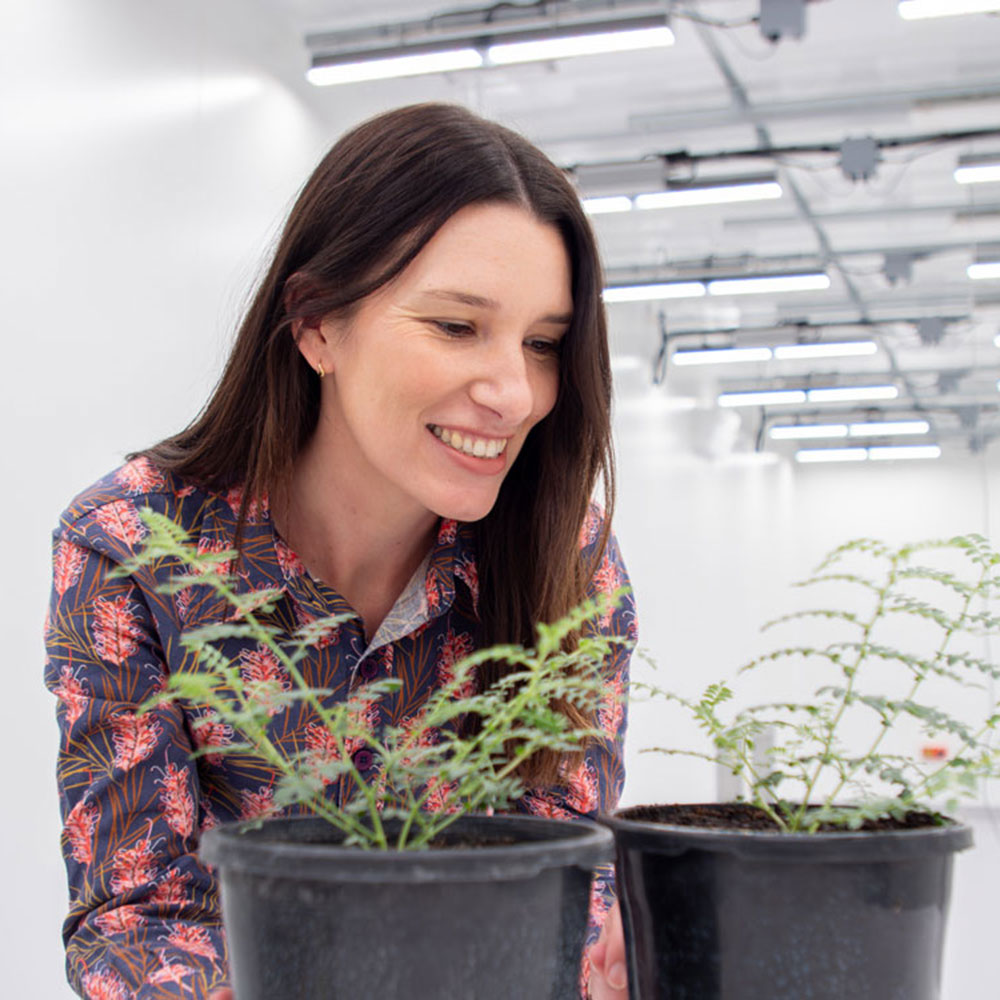Fast-tracking the development of chickpea varieties that are adapted to high temperatures is the focus of a new research project aimed at addressing the challenges facing growers of Australia’s biggest pulse crop.
The national project led by The University of Queensland with investment from the Grains Research Development Corporation (GRDC) brings together a multi-disciplinary team across agronomy, plant breeding, crop physiology, crop modelling, genomics and genetics.

Project lead, UQ’s Dr Millicent Smith said growers are seeking solutions as high temperatures increasingly limit chickpea production.
“Chickpea is vulnerable to high temperature during the reproductive stage with late sown chickpea particularly exposed,” Dr Smith said.
“We want to ensure that Australian growers maintain their competitive edge which means new varieties with improved genetics to cope with heat stress are essential for the future.”
GRDC manager for genetic technologies – pulses, Dr Camilla Hill, said the significant investment was firmly focused on responding to the needs of Australian growers.
“We know that growers value chickpeas in their farming system rotations and because of their market value so this collective investment of $8.2 million is about supporting the development and production of chickpeas that will tolerate high temperatures,” she said.
"One of the primary objectives of this project is to create user-friendly phenotyping tools for breeders, alongside the deployment of genotyping and genomic prediction tools to accelerate the development of chickpea varieties with enhanced temperature tolerance for Australian growers.
“Ultimately the aim is to boost yield, production and profitability, particularly during heatwave years, ultimately enhancing farming system sustainability.”
Dr Kristy Hobson from Chickpea Breeding Australia and the New South Wales Department of Primary Industries said there are many benefits to having legumes in a sustainable system in terms of weed management and improving soil health.
“Whilst we understand that chickpea is a positive for a rotation, we want the crop to be profitable in its own right,” Dr Hobson said.
“Increased investment in the breeding program has allowed us to expand our target regions and the key breeding objectives.
“This season India has lifted the tariff on desi chickpea and prices are high, so we’re excited by the expectation of the biggest planting in some years.
“The export market and end user quality characteristics are critical to us, but it’s also important that the varieties provide growers with the agronomic characteristic and the adaptation to be resilient with yield.”
Dr Smith said working closely with Chickpea Breeding Australia was critical to project success as it will ensure tools and technologies can easily be adopted in the breeding program.
“We are very focused on yield stability across environments, which means if varieties are adapted to high temperature but there isn’t hot weather that season, growers will still get a good crop.
“High temperature tolerance is a complex trait but we're trying to understand the transition from flowering through to the pod filling stage,” she said.
"The project team includes researchers across all chickpea production areas with field experiments to be run across the country.
“This is because heat stress manifests in different ways across regions.
“Crop modelling will help to define the types of heat experienced in Australia now and predict into the future so the research team can identify the different trait combinations that are needed across the country,” Dr Smith said.
“We’re studying germplasm from the genebank, landraces and wild chickpea as well as commercial cultivars and late-stage breeding lines in multi-location field trials and controlled environment experiments in UQ's new Plant Futures Facility.
“All field trials will be phenotyped using UAVs mounted with multispectral sensors and in collaboration with the Australian Plant Phenomics Network, hyperspectral sensing will be deployed, which may reveal the underlying biochemical mechanisms important for maintenance of photosynthesis under high temperatures.
“The traits we are focused on are highly quantitative so the project will adopt an AI-guided breeding approach to rapidly stack desirable genetics into elite chickpea germplasm.
“Our multi-disciplinary team located across Australia and close partnership with industry means chickpea growers should reap the rewards more quickly.”
This GRDC investment is led by The University of Queensland with partners NSW Department of Primary Industries, Queensland Department of Agriculture and Fisheries, University of Sydney, Flinders University and Murdoch University.
Images are available via Dropbox.
Media: Dr Millicent Smith, Millicent.smith@uq.edu.au, +61 412 617 567; QAAFI Media, Natalie MacGregor, n.macgregor@uq.edu.au, +61 409 135 651.
The Queensland Alliance for Agriculture and Food Innovation is a research institute at The University of Queensland supported by the Queensland Government via the Queensland Department of Agriculture and Fisheries.



